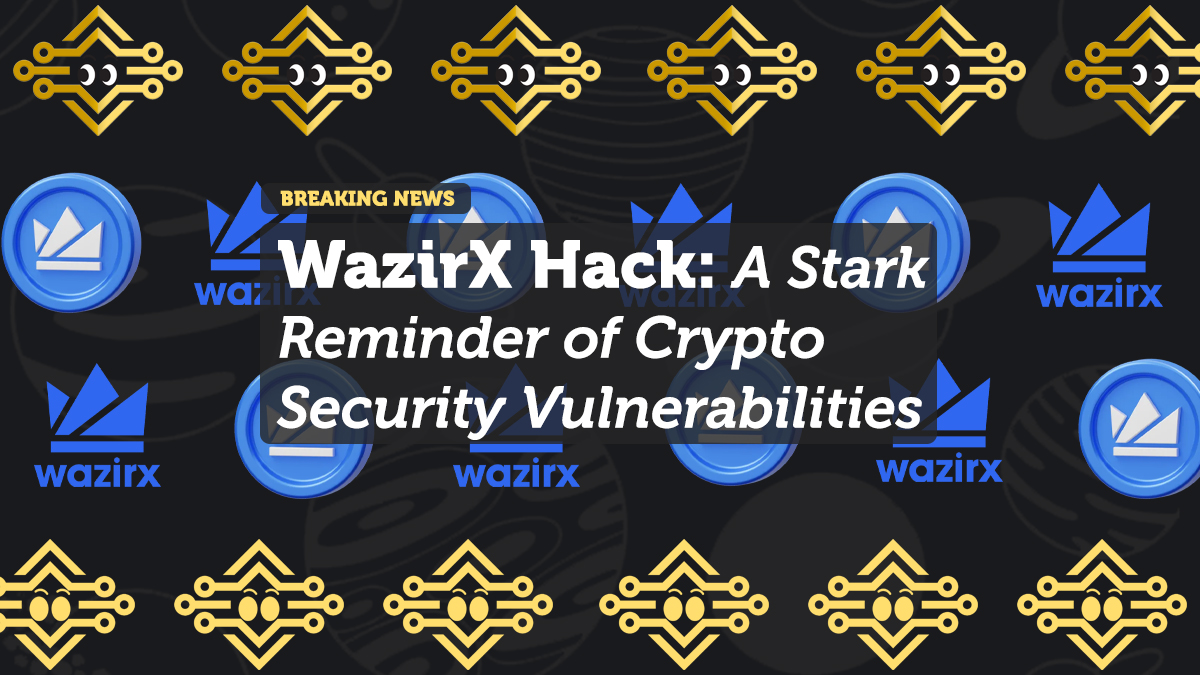
WazirX Hack: A Stark Reminder of Crypto Security Vulnerabilities
Saturday, July 20, 2024 | Boston, MA
Article By: Kenneth M. Garofalo
WazirX, India’s leading cryptocurrency exchange, faced a major setback with a $235 million breach of its Safe multisig wallet. The attack, marked by meticulous planning and strategic deception, highlights the ongoing vulnerabilities within centralized exchanges and the broader Web3 ecosystem.
The Breach
The attack on WazirX was not a sudden strike but the culmination of at least eight days of careful preparation. The hackers, demonstrating both patience and sophistication, initiated their scheme with small test transactions. These preliminary moves laid the groundwork for targeting WazirX’s multisig wallet, which involved six signatories: five from WazirX and one from their custody provider, Liminal.
Unlike typical direct thefts, this breach involved upgrading the multisig wallet to a malicious version controlled by the attackers. This required compromising WazirX’s security protocols, which included Ledger Hardware Wallets and a whitelist policy for destination addresses. The attackers secured two private keys and phished the remaining two signatures by tricking signers into approving what appeared to be a routine USDT transfer.
A crucial element of the attack was the compromise of Liminal’s interface, allowing the attackers to replace the legitimate transaction payload with their malicious code. Consequently, two of the four required signatures facilitated the upgrade to the malicious contract instead of the intended USDT transfer. This lapse in verification gave the attackers full control over the wallet, enabling them to drain the funds.
Immediate Response
Upon detecting the breach, WazirX swiftly paused withdrawals and confirmed the security breach. They are now ranked number seven on the notorious Rekt Leaderboard, just below DMM Bitcoin, which lost $304 million in a similar multisig compromise earlier this year.
The technical breakdown provided by experts like Mudit Gupta and the investigative efforts of ZachXBT revealed a complex web of transactions involving Tornado Cash, a privacy tool often used in such exploits. The attackers’ use of test transactions and multiple addresses showcased their methodical approach, underscoring the sophistication of the breach.
WazirX’s Plan of Action
WazirX has been proactive in addressing the aftermath of the attack. Co-founder Nischal Shetty outlined the steps being taken to mitigate the damage and recover the stolen assets. These steps include:
- Bounty Program: WazirX is preparing a bounty program to incentivize assistance in freezing and recovering the stolen assets.
- Fund Tracing: The team is in touch with experts to continuously trace the movement of the stolen funds.
- Exchange Collaboration: WazirX has informed over 500 exchanges about the breach, seeking their cooperation in blocking the identified addresses.
- Data Analysis: Detailed analysis is underway to understand the full extent of the damage.
- Legal and Regulatory Actions: The exchange has filed a police complaint and is pursuing additional legal actions, collaborating with law enforcement and regulatory bodies.
WazirX’s Twitter account provided further updates, emphasizing their collaboration with the Financial Intelligence Unit (FIU) and CERT-In. The exchange is working closely with forensic experts and law enforcement to trace the stolen funds and apprehend the perpetrators.
Broader Implications
This attack on WazirX not only shakes user confidence but also raises significant questions about the security of centralized exchanges and multisig implementations. The rise of sophisticated, potentially state-sponsored attacks adds a new dimension to the already challenging landscape of cryptocurrency security. Mudit Gupta’s analysis hints at the possibility of North Korean involvement, although this remains unconfirmed.
The breach underscores the inherent risks in entrusting large sums to any single entity, no matter how reputable. As phishing attacks and compromised private keys become more prevalent, the community must reevaluate the safety of centralized exchanges.
Moving Forward
WazirX’s efforts to recover from this unprecedented attack highlight the need for collective action within the Web3 ecosystem. As Nischal Shetty pointed out, the support and collaboration of the entire community are crucial in overcoming such challenges and preserving the ethos of Web3.
In conclusion, the WazirX hack serves as a stark reminder of the vulnerabilities in the crypto space. While centralized exchanges offer convenience, they also present significant risks. As the industry evolves, it may be necessary for users to adopt more decentralized approaches, becoming their own custodians to safeguard their assets in an increasingly treacherous environment.















